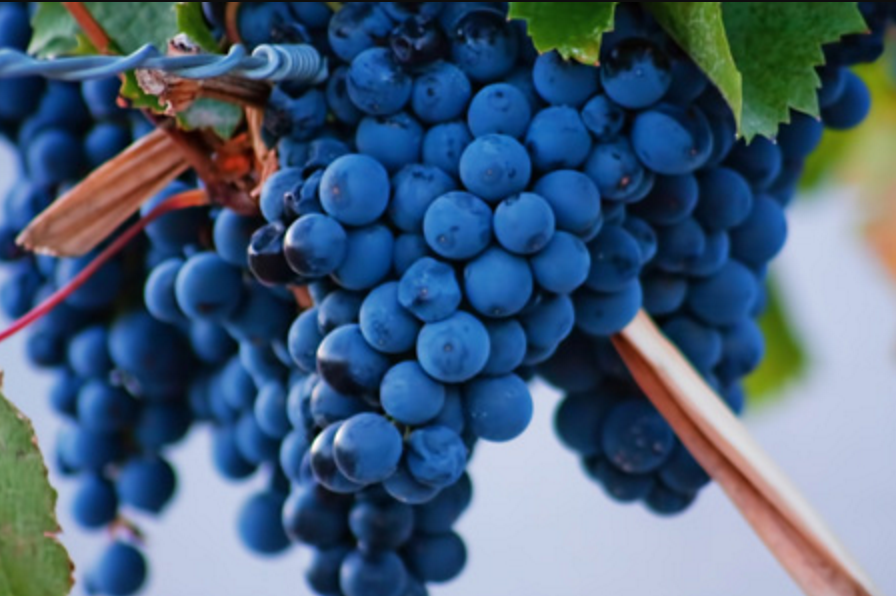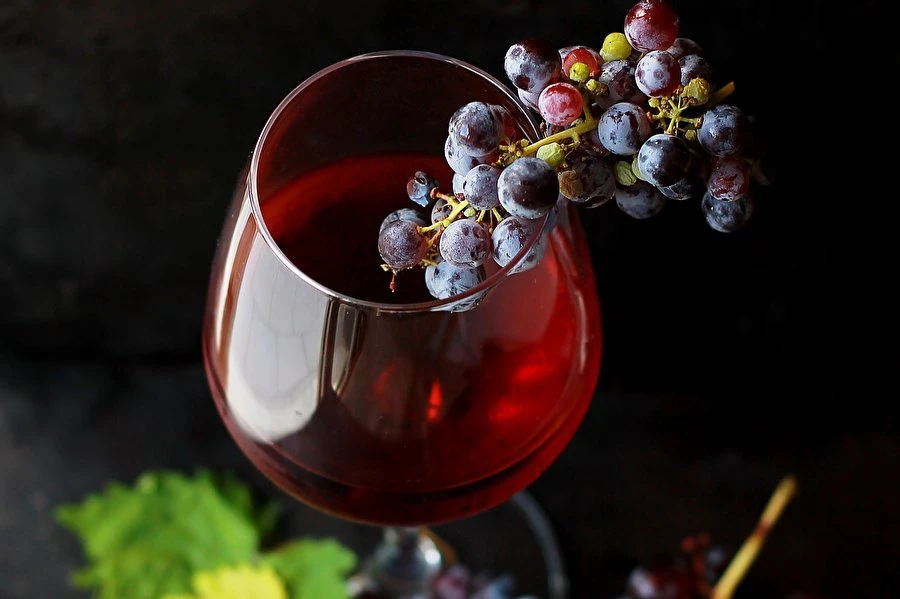Argentina’s wine world is dominated by one extraordinary grape variety that has transformed from a struggling French cultivar into the nation’s most celebrated export: Malbec. This deep purple grape, originally from the slopes of southwestern France, has found its true calling in the sun-drenched vineyards of Argentina, where it produces wines of exceptional quality and character that have attracted wine enthusiasts worldwide.
The story of Argentine Malbec is one of remarkable transformation and adaptation. What began as a minor blending grape in French Bordeaux wines has evolved into Argentina’s flagship variety, representing approximately 25% of the country’s total vineyard plantings and accounting for over 70% of wine exports. This purple-skinned grape variety, known for its inky dark color and robust tannins, has become synonymous with Argentine wine culture, earning recognition as the country’s “national variety.”
The journey from French vineyards to Argentine prominence spans over 150 years, marked by periods of decline, rediscovery, and ultimate triumph. Today, Argentine Malbec stands as a testament to the power of terroir – the unique combination of climate, soil, and winemaking tradition that allows a grape variety to express its fullest potential. With its characteristic deep color, velvety texture, and complex flavor profile featuring notes of blackberry, plum, and violet, Argentine Malbec has established itself as one of the world’s most distinctive and sought-after wine styles.
The French Origins and Early Struggles

Malbec’s story begins in the vineyards of southwestern France, particularly in the Cahors region, where it was known by various names, including Côt and Auxerrois. As one of the six grape varieties permitted in red Bordeaux blends, Malbec played a supporting role in some of France’s most prestigious wines. However, its journey in its homeland was fraught with challenges that would ultimately lead to its near-extinction in French vineyards.
The grape’s thick skin, while contributing to its intense color and robust tannin structure, made it particularly susceptible to fungal diseases and pests. This vulnerability became catastrophically apparent during the Great Frost of 1956, which devastated French vineyards and killed off approximately 75% of Malbec crops. While some regions like Cahors managed to replant and maintain their Malbec traditions, Bordeaux producers largely abandoned the variety in favor of the more reliable Merlot.
In its native Cahors, Malbec must constitute a minimum of 70% of any AOC wine, where it creates the region’s famous “Black Wine” – deeply colored, tannic expressions that showcase the grape’s more austere character. However, even in France, the success of Argentine Malbec has influenced local winemaking, with some producers adopting riper, more approachable styles alongside their traditional expressions.
The Argentine Revolution: A New World Renaissance
The transformation of Malbec’s fortunes began in the mid-19th century when French agronomist Michel Aimé Pouget brought grapevine cuttings from France to Argentina in 1853. Instructed by provincial governor Domingo Faustino Sarmiento to improve local wine quality, Pouget established the first agricultural school in Mendoza and planted what would become the foundation of Argentina’s wine industry.
The timing of this introduction proved fortuitous. The Malbec cuttings that Pouget brought represented a unique clone that may have subsequently gone extinct in France due to frost damage and the phylloxera epidemic. This genetic material found an ideal home in Argentina’s diverse terroir, particularly in the Mendoza region, where the combination of sunny weather, fertile soils, and optimal growing conditions allowed the grape to express characteristics that surpassed even its European origins.
During the economic turmoil of the 20th century, some Malbec plantings were unfortunately replaced with higher-yielding varieties like Criolla Grande and Cereza for bulk wine production. However, the grape’s renaissance began in the 1990s as the Argentine wine industry shifted focus toward premium wine production for export markets. This strategic pivot, combined with the grape’s exceptional quality potential in Argentine conditions, led to Malbec’s emergence as the country’s signature variety.
Terroir and Regional Expressions

Argentina’s diverse geography provides Malbec with an extraordinary range of growing conditions, from the lower altitudes of Mendoza to the extreme high-altitude vineyards of Salta province, which can reach nearly 3,050 meters above sea level. This altitudinal diversity creates distinct expressions of Malbec that showcase the grape’s remarkable adaptability and the concept of terroir.
In lower altitude regions, Malbec tends to produce wines with thinner skins and softer, more supple fruit characteristics, making them ideal for rosé production and approachable red wines. However, it’s in the higher elevations, particularly above 1,000 meters, where Malbec truly excels. The combination of intense sunlight, cool nights, and clean mountain air creates ideal conditions for developing thick skins, concentrated flavors, and vibrant aromatics.
The Mendoza region remains the epicenter of Argentine Malbec production, with sub-regions like Uco Valley and Luján de Cuyo consistently producing top-rated wines. These areas benefit from the dramatic diurnal temperature variation – hot, sunny days followed by cool nights – which helps maintain the grape’s natural acidity while allowing for optimal flavor development. The result is wines with the structure and complexity to age gracefully while maintaining the approachable, fruit-forward character that has made Argentine Malbec so popular globally.
Flavor Profile and Winemaking Characteristics
Argentine Malbec is distinguished by its distinctive flavor profile, which differs markedly from its French counterparts. While French Malbec tends to be more tannic and austere, Argentine expressions are characterized by their deep color, velvety texture, and intense fruity flavors. The typical Argentine Malbec showcases notes of blackberry, plum, and black cherry, complemented by violet aromas and a plush, approachable mouthfeel.
The grape’s thick skins contribute high levels of anthocyanins, the compounds responsible for its characteristic deep purple color with bright magenta rim – a telltale sign for wine enthusiasts conducting blind tastings. These same skins provide robust tannins that, while pronounced in young wines, soften with age to reveal secondary flavors of cocoa, leather, and spice, particularly when aged in oak barrels.
Modern Argentine winemakers have mastered the art of crafting both single-varietal Malbecs and sophisticated blends. While pure Malbec wines showcase the grape’s distinctive character, blends with Cabernet Sauvignon and other Bordeaux varieties demonstrate Malbec’s excellent blending capabilities. The genetic diversity of Argentina’s mostly ungrafted, massale-selected vines, combined with the country’s diverse terroir, provides endless possibilities for flavor expression.
Global Impact and Future Prospects

Today, Argentina produces and exports more Malbec than any other country, with the variety representing 69.3% of total wine exports by volume and an impressive 91% of total export value when considering bottled wines. This success has not only established Argentina as a major player in the global wine market but has also influenced Malbec production worldwide, with successful plantings now found in regions from Washington State to Australia.
The future of Argentine Malbec looks exceptionally bright, with industry leaders like Laura Catena noting that the grape “has not gone through a slowdown since its international breakthrough in the 1990s. The ongoing exploration of Argentina’s 110 different appellations continues to reveal new expressions and styles, from high-altitude Salta wines to the diverse terroirs of Mendoza’s sub-regions.
As climate change affects traditional wine regions globally, Argentina’s high-altitude vineyards may become increasingly valuable for maintaining the acidity and freshness that make great wines. The combination of genetic diversity, terroir variation, and innovative winemaking ensures that Argentine Malbec will continue to evolve and surprise wine enthusiasts for generations to come.


